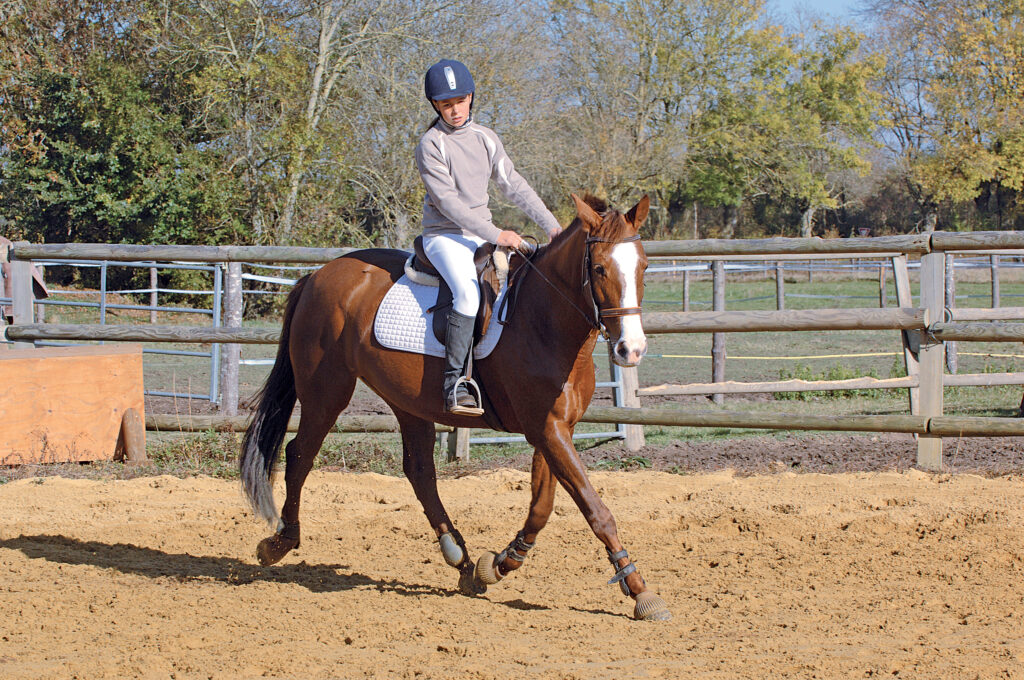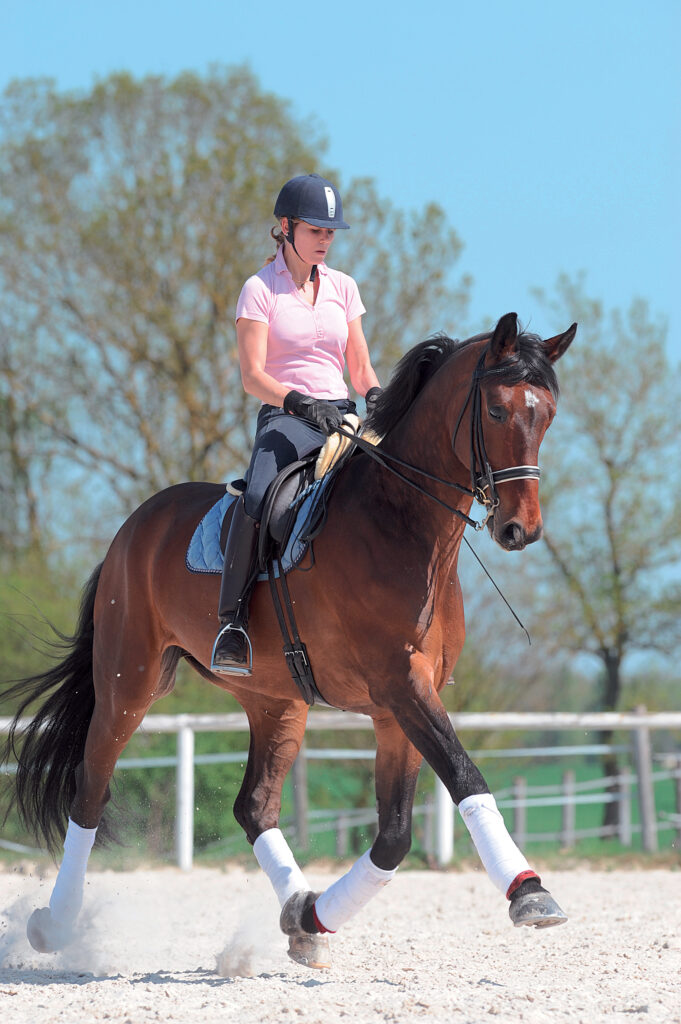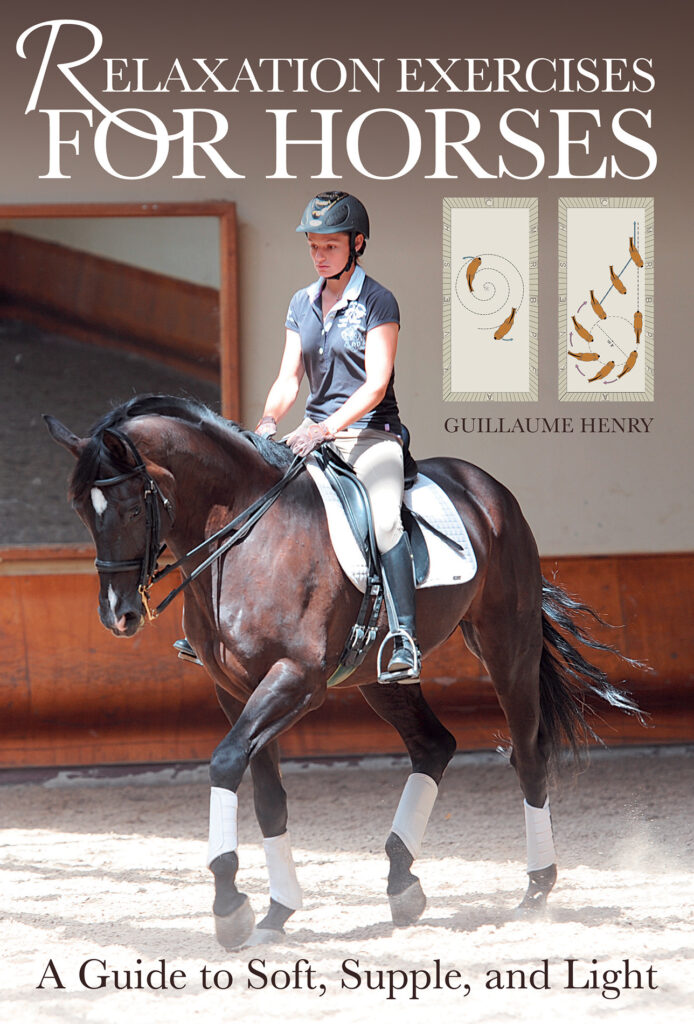When it comes to the education of the horse, the ultimate goal of training is to be able to guide the horse in a way that makes the most of his potential. Methods for achieving this goal, on the other hand, differ according to the discipline, sport, or work for which the horse is intended, the rider, the horse. A quiet, generous acceptance that preserves the character and personality of the horse can only be achieved by a thoughtful rider.

Courtesy, Alain Laurioux/Trafalgar Square Books
How You Ask Is Just As Important As What You Ask
There’s a fundamental principle every rider should keep in mind: whether in pursuit of suppleness, relaxation, or any other action, the purpose and impact of any given exercise are inseparable from the way in which it’s done. Some of the best riders even say that it isn’t the exercise that trains, but the way the horse is asked to perform it. So, stretches and relaxation exercises shouldn’t be thought of as an end in themselves. What matters is how they’re done, and what they bring to the training of the horse as a result.
Exercises geared toward suppleness will be very useful to most riders, provided these exercises are done with an eye to the real objective—to relax. Which exercises you do will depend on how useful they are to you and your horse, and whether they genuinely improve your horse’s way of going. The aim is to encourage your horse to stay relaxed and light.
Understanding Weight Distribution

Courtesy, Alain Laurioux/Trafalgar Square Books
To understand how exercises serve the training of the horse, it’s important to be aware of the fact that the horse is naturally oriented toward his forehand, and his weight is distributed along a horizontal base of support, which predisposes him toward forward motion. By her presence alone, the rider helps to overload the forehand even more, since around two-thirds of her weight rests there. This balance also favors forward mobility: the mounted horse is even more “on his forehand,” and has only one solution—to go faster, straight ahead, in an effort to stay under all this weight. To manage this situation, the rider has to “shape” the horse, physically and psychologically, to allow him to achieve ease in his movements and mobility in all directions.
The training of the horse, therefore, is about making him stronger but also more flexible, so he can lighten his forehand and engage and flex his haunches. When his training has progressed far enough, he’ll reach a position of balance in which he is ready to move in any direction and capable of working with a lengthened or shortened base of support. In other words, the horse will have achieved a kind of balance that allows you to “play any note in the scale” of each gait, from the fullest extension to the loftiest suspension.
This state of balance has a name: it’s about gathering the horse in a state of collection. To achieve collection, the classical approach rests on three main principles: impulsion, flexibility, and lightness.
Not all horses can achieve a complete (“ideal”) degree of collection, but this goal should remain at the heart of your work in the saddle. Suppling and relaxation exercises can help you achieve it.
Never use force. The secret, in riding, is to act little, and always to a purpose. The more we do, the worse it gets. The less we do, the better.
—Nuno Oliveira
Things to Keep in Mind
- Relaxation exercises are used to soften the muscles to develop their elasticity, because a muscle is contracted more easily when it is long and relaxed first. The important thing isn’t for your horse to perform any given exercise precisely as it’s described in the “manual,” but for him to develop flexibility, suppleness, and ease of movement. You should never force your horse. As he becomes more flexible, with time, he’ll be able to give you something closer and closer to the ideal.
- Any exercise that requires an effort, or requires a position that tests an area of habitual stiffness or a conformational limitation, always causes—and very quickly—discomfort, then fatigue, and then suffering, in the parts of the body that are directly affected. These kinds of exercises shouldn’t be asked of the horse for very long, and be sure to offer release at the smallest result.
- Forcing the horse into a constrained position for a long time always causes loss of impulsion, tightness in the muscles, and compensatory issues. It’s repetition of the same exercise performed under good conditions and alternated with periods of complete relaxation on a long rein, that creates progress. So, all movements should be followed by a period of rest, at a free walk, with the reins left long.
- Before starting any exercise, have a clear idea of what you’re trying to achieve. Whatever movement you’re requesting, its proper execution by the horse depends on your aids and on the appropriateness of your choices of which aid to use when, at what intensity.

Courtesy, Charles Thiebault/Trafalgar Square Books
Every horse is an individual; you’ll have to make a choice when it comes to the range of the stretches you want to attempt in your relaxation exercises. Any given degree of stretch or effort can be excellent for one horse and catastrophic for another, so keep in mind the objective of each exercise, the movements it requires, and whether you need to modify either one for your horse.

This excerpt from Relaxation Exercises for Horses by Guillaume Henry is reprinted with permission from Trafalgar Square Books.
For more information or to order this book, visit the Trafalgar Square Books website.










